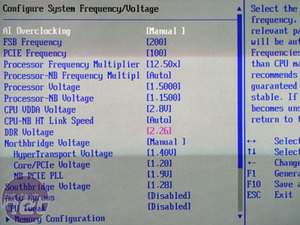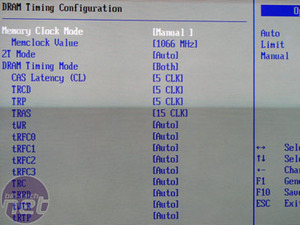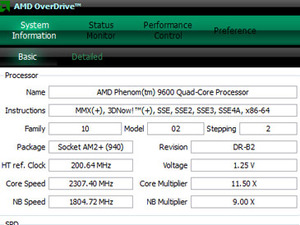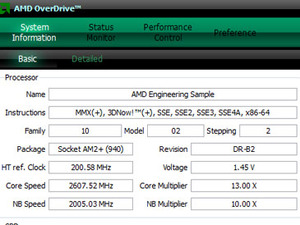Overclocking Shenanigans
We had two Black Edition 9600 CPUs and after two days of solid overclocking and fiddling we had ended up with what can only be described as an extremely laboursome and frustrating experience.With our first CPU we achieved a measly 2.5GHz stable, upping the multiplier to 12.5x. Any extra HyperTransport frequency at this speed made it unstable in some way; at most we got an extra two or three MegaHertz from it so decided to leave it at the stock 200MHz.
At 2.5GHz, the first CPU required some quite hefty voltages to get it going and keep it happy: 1.5V Core voltage, 2.8V CPU VDDA, 2.26V Memory voltage and 1.4V HyperTransport voltage. At 2.6GHz (a single step up to the 13x multiplier) we managed to get into Windows, but any load hard locked the system within a few minutes.
A little dismayed, we dropped in the other Phenom 9600 and it was even worse: 2.4GHz. Frustrated we tried another AM2+ motherboard – the Gigabyte GA-MA790FX-DQ6 and found that wasn’t any better either. Next things just went from disappointing to just plain weird: we put the original Phenom 9600 Black Edition back in the Asus and tried to get some benchmarks out of it at 2.5GHz, but now it had decided that 2.4GHz was all it was good for.
After removing the CPU to test our Engineering Sample to check the motherboard was still fit, which it was, things just continued to get worse: when I replaced the Black Edition CPU yet again for a screenshot at 2.4GHz, the system decided to throw a fit at this heinous act and would lock up simply by loading any application.
There were tears, plenty of foul mouthed antics (that even made up some new phrases) and even some hand smacking of keyboards, but at the end of the day that’s the world of overclocking – sometimes you get a winner, sometimes a dud (or two). We tried every possible combination of higher, or even lower voltages (just in case there was too much, causing interference), as well as disabling any extra features to try and minimise their effect, but it was all to no avail.
In the end, the engineering samples we had tested in our original article were actually better overclockers – the best reached 2.6GHz on air, stable, like we had previously achieved for the first look review. This was without half the effort we had put into overclocking the Black Edition processors too, and they also had to cope with a higher native north bridge frequency of 2.0GHz.
While some have seen 3GHz out of the Phenom 9600 Black Edition, albeit with watercooling, we’re not the only ones to find a brick wall so close to stock speed either. As much as we’d like this Phenom to be the next 65nm Athlon 64 X2 5000+, or our personal favourite – the BE-2350, it just doesn’t seem that way at all.
Since the processor was retail specification, we did decided to test it to provide some accurate results in our CPU benchmarks so you can see exactly what effect the extra 200MHz northbridge frequency has on the results, and how a retail Phenom 9600 CPU will actually perform.

MSI MPG Velox 100R Chassis Review
October 14 2021 | 15:04













Want to comment? Please log in.